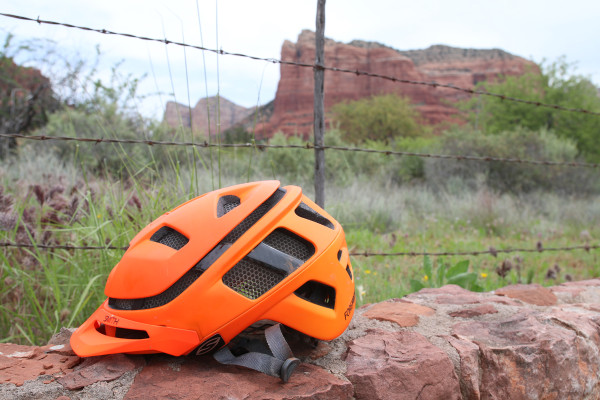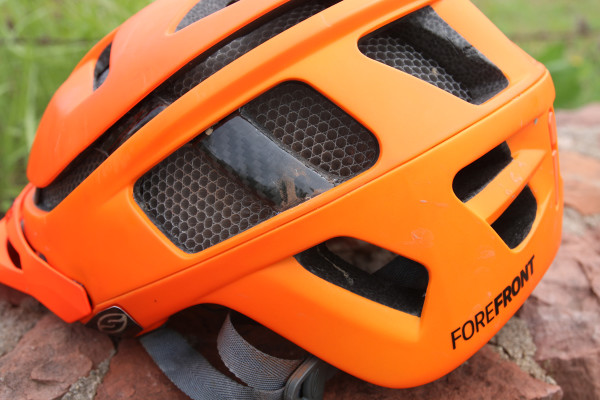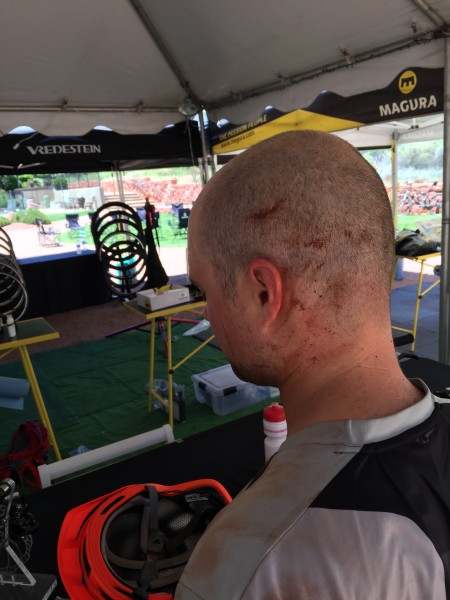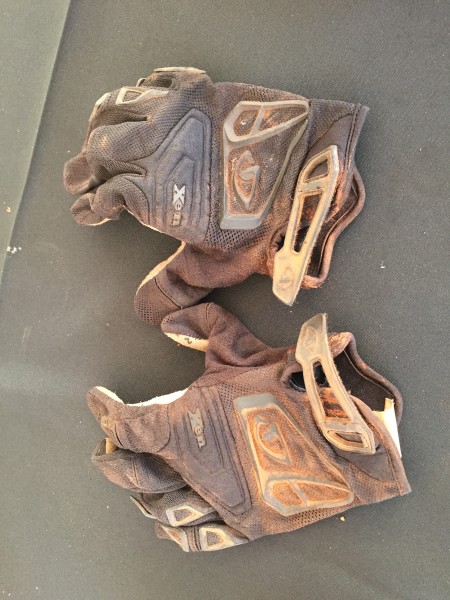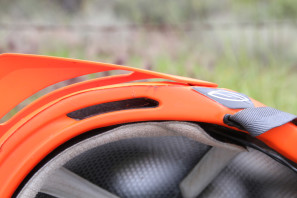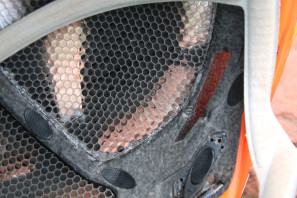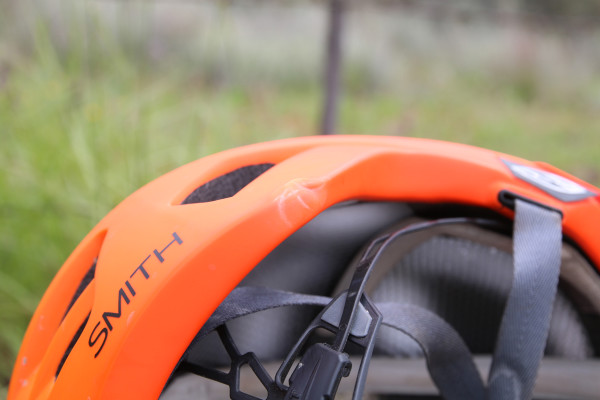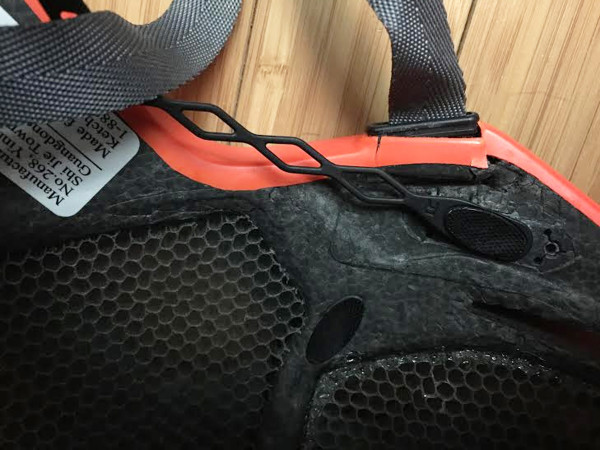It was a stupid little crash. A worst case scenario brought on by a silly mistake accentuated by fatigue. After managing to fully clean the Hiline Chute after only my second ever attempt I was feeling pretty good about my technical skills. Leave it to the universe to put me in my place with a crash on a completely flat section while cruising down a wash at 15mph or so. After getting a bit too relaxed and focusing more on trying to find the ideal line than the line I was on, a root or a rock swatted my front tire just hard enough to make me lose my grip on the bar with my right hand. In slow motion I watched as the grip got father and farther away until I was tumbling through the red dirt wondering what just happened?
I distinctly remember hitting my head during the crash and thinking, that should have hurt a lot worse…
Just to be clear, the photo of my head above shows the dirt, not blood.
After the typical systems check we all go through after a crash, I dusted myself off, straightened my handlebar with a few swift blows, and got back on the bike. Using a childhood of shots to the head from hockey as a baseline, I thought to myself, huh, that wasn’t as bad as I thought. It wasn’t until we got back to camp that I started to find all the tell tale signs of a solid crash. Between the red dust covering half of my body (including the back of my head), I started noticing what eventually turned out to be a helmet that was destroyed doing what it was supposed to do – protecting my brain.
Closer inspection revealed what was likely a much more violent, rolling impact than my lack of injuries suggested. The outer shell shows a few impacts including a flattened rear deck, and more concerning – a mushroomed dimple on the lowest part of the rear of the helmet. When you hear companies extolling the virtues of lower coverage at the back of the head, this is exactly why. Without that dip behind the temple, whatever smacked into the back of my helmet probably would have caused some serious damage.
The coup de grâce for the helmet so to speak comes when you look at the inside of the helmet. In addition to some of the Koroyd Aerocore material showing signs of deformation near the impacts, the EPS liner also has a few cracks as well as a broken mounting point for the chin strap. Yeah, I guess it was worse than I thought. It’s interesting that the Koroyd material didn’t crush much at all, though that could have been just due to the nature of my crash. What did seem to happen though was the Koroyd appears to have dispersed the energy around the helmet rather than focusing it on the site of impact. Now there are even MIPS versions of the helmet as well potentially adding another layer of protection.
If I hadn’t found the damage on the helmet though, I would have never guessed. Honestly, I thought for sure that in a crash the honeycomb shape would be permanently embedded into my scalp. Instead, I was left mildly irritated for crashing in the first place, but without any signs of a concussion. And without a sweet helmet.
Before the crash, the Forefront was one of my favorite helmets due to the fit. Fairly light at 310g, the helmet cradled my head without any hot spots and a comfy pad set. The indexable visor worked well, though it could stand to use a few extra positions if we’re getting really picky. Add in the integrated mount for lights or an action camera plus the sunglass and goggle channels, and you have a very well thought out lid.
Verdict:
Is the Smith Forefront helmet perfect? It’s close, but for riders like myself who sweat profusely I’d like to see slightly improved ventilation. Out in the desert, the helmet just feels hot. However, based on the level of protection evidently afforded by the Forefront, the unique looks, and the fantastic fit the helmet comes highly recommended.
